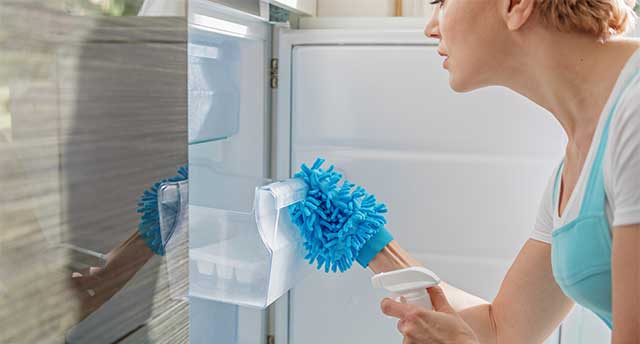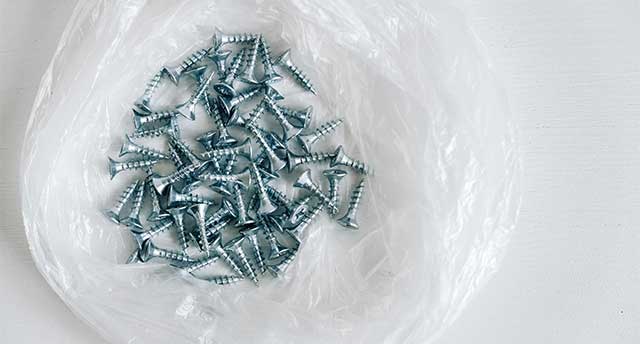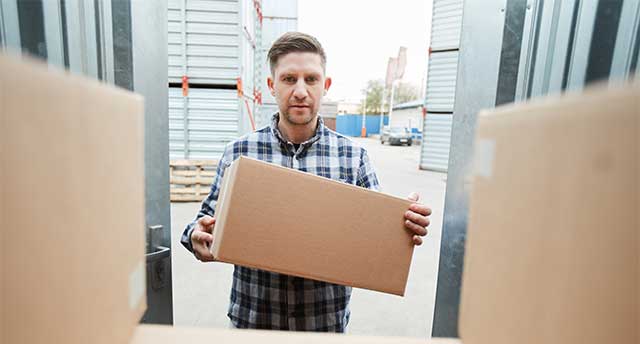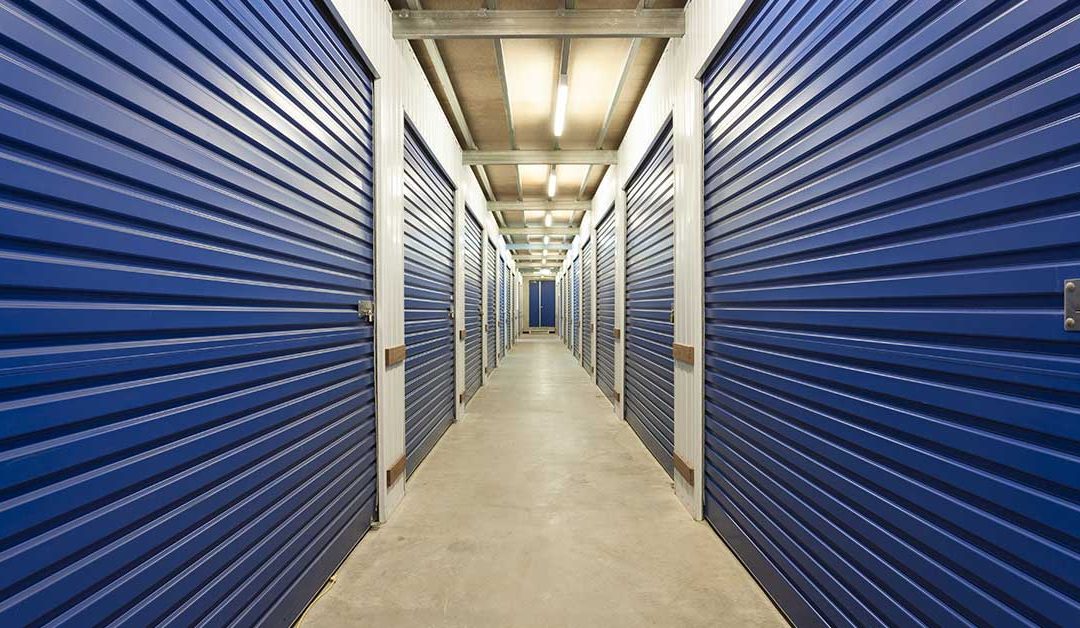So you are in the process of moving from your existing home to your new one… Maybe you are downsizing, decluttering or renovating your home. There are plenty of reasons why you might suddenly find the need to store and move your furniture into a storage unit. In this article, you will find expert tips for strong and moving furniture courtesy of Palmers Relocations
Clean All Furniture Pieces

Clean All Furniture Pieces Including Your Fridge
The first and probably one of the most important tips when moving your furniture to storage is cleaning. Make sure you clean your belongings conscientiously as it is an essential step in protecting your furniture.
Let’s imagine you store something dirty, dusty or even humid. The consequences can be dramatic when you unpack. Your items, your clothes, etc…can be so damaged that you’ll be unable to use them anymore because of a build-up of dirt or even worse mould!
Here is a non-exhaustive list of things to clean before packing and storing:
- Clothes, linen and other washable fabric: Wash everything before putting them in a carton. In addition, make sure everything is completely dry. It will avoid mould and smelly odours.
- Fridge and freezer: turn off and defrost your refrigerator. Then clean the shelves, doors, etc. Carefully. Like the clothes, it is important to make sure your refrigerator is totally dry. For more tips check out our blog how to store a fridge when moving.
- Other appliances: Some items from the kitchen may have grease on them or those for the bathroom can have limescale. It is important to clean all of them outside and inside. We also have some great tips on how to clean your appliance in an eco-friendly way.
Create an Inventory List
Do you think when moving you’ll be able to remember all the items you put into the boxes? Well, that’s unlikely to happen. Whether you are storing your items for a short or long term, it is important to have an inventory list. By proceeding in this way, you always know what you have stored and where it’s located in your storage space.
For your inventory list, you can either use the old fashioned way; paper and pen or embrace the digital area with a digital spreadsheet on your phone or tablet. Either way, the information you’ll put down are the same:
- Name
- Description
- Room
- Other relevant details
The above inventory gives you enough details to remember where your items are. If you decide to go with a digital version of your inventory list, you can add more details to the furniture stored such as:
- Brand
- Serial Number
- Type
- Attaching photos
- Anything you need to know
Don’t Forget to Label All Your Boxes
After having listed your furniture, it’s time to put them into moving boxes. But we know, you don’t want to spend hours searching for a specific box once they are stored. Indeed, nothing looks more like a box than another box.
The simplest way is to label your cartons. Our pro-tips here is to use coloured labels for your boxes. Thus, each room can have its own colour. For example, kitchen boxes will be labelled in red, furniture from the living room labelled in blue and so on.
Another tip is to put the label on the top of the box and also on the side. This way, walking in your self-storage unit, you’ll recognise all the boxes regardless of where they are located. And you’ll know what’s inside.
It saves so much time!
What is the Easiest Way to Move Large Furniture?

You should disassemble your furniture when possible
It is not always feasible, but when you can you should disassemble your furniture. Items like bed frames, table, wardrobe, etc. take space and the last thing you want to do is losing storage space.
Dismantling your furniture has various advantages. Firstly, it makes it more convenient to move small pieces than the whole bed frame, for example. Secondly, it reduces the risk of scratching and/or damaging them while moving.
We have two pro tips:
- Tag all the pieces if possible: when you take your furniture back, you won’t spend hours looking for which part is going into which other. That is the best way to go.
- Put all the screws and small items in a bag and in a dedicated box: it sounds obvious, but to whom it has never happened to look for the screws? We are right, aren’t we? So, put all the screws in a dedicated and labelled bag. Then put all your bags in another dedicated moving box that is identifiable like our Safe Spot Box. By doing so, you will reassemble all your furniture in no time in your new home.
How to Pack Furniture And Items for Self-Storage?
One of the important things not to do is to overfill your boxes. For instance, items like books are really heavy. Individually books do not seem that heavy or bulky. However, once you have placed all of them in a large box, moving the box will be really back-breaking. As a general rule, take larger boxes for lighter items and smaller boxes for heavier ones. It avoids placing you in a situation where you’ll need 2 to move a box.
Secondly, don’t just throw your furniture in your cartons. On top of losing space, there is a possibility of damaging the contents. If you still have room, utilise a newspaper or bubble wrap to fill up the gaps. That will prevent your belongings from moving and being damaged.
Finally, if you need to use wrapping tape, do not stick it directly on your items. It might remove the paint when you will take it off.
How do You Cover Furniture For Storage?
It all depends on the type of furniture you wish to cover.
- Kitchen: packing paper or similar materials is the most appropriate. It avoids plates, glasses and other kitchenware getting scratched. You also should pack them individually.
- Mattresses: Wrap this in a plastic cover. It will protect your mattress against stains and potential vermin.
- Clothes and similar fabric: as explained above, be sure to pack only dry clothes. If you are afraid of mould or other bacteria, you can put lavender in your boxes to keep them fresh and free from insects for months.
What Type of Storage and Size Do I Need?
Several aspects determine the type of storage space you will need. For example, are you looking to store a few items or all your furniture? Do you need a solution for the short or long term? Do you need to access your belonging often or not? These are the kinds of questions you should ask yourself when storing your belongings.
For example, at Palmers Relocation, we have our own storage facility and here is a brief overview of our solutions:
- Container Storage: We can either store your own 20ft container or use one of our readily available and modern shipping containers. With a container, you can store up to 36cbm which represents a 3 bedroom house. They are great when storing your furniture for a longer period.
- Storage Modules: Modular storage offers an alternative to containers and is suitable for smaller shipments being 1/3 of the size of a shipping container
- Self Storage Unit: This solution gives you the flexibility of accessing the furniture stored 7 days a week. Palmers Storage offers 11 different sized units for all of your needs.
We are also equipped for specific requirements such as:
- Fine Art: through our climate-controlled facilities we store all types of artworks from paintings, printing, antiques and more.
- Wine Storage: it’s a temperature-controlled storage solution to guarantee that wines are always kept at the right temperature.
As you see, for storing your furniture, you have numerous options. If you are moving and would like to discuss your needs, feel free to contact our Storage Manager for more details.
Strategy to Organising Your Storage Space

Make sure to place the heaviest piece of furniture at the bottom
Now that we went through all the steps from cleaning to selecting the type storage facility you need, the last step is to move your furniture and organise your storage.
Make sure to place the heaviest piece of furniture at the bottom, like foundations. Then, on top of them add lighter boxes. This will avoid the boxes to collapse and break what’s inside. Everything large such as a couch, mattress, etc. should be put on the side of your storage space. It will make things easier to access your items later. You can use the labels created before to organise a plan for your storage unit. So, at a glance, you’ll know exactly where each of your belongings are. Also, we know that you would like to put as many boxes as you can in your storage unit in order to maximise the space. However, don’t forget to leave a gap between your furniture. By doing so, you allow the air to go through and it reduces the risk of mould.
Finally, if you need to access furniture regularly or soon, don’t forget to leave them in front of the gate and not at the back.
If you need help, Palmers Relocations can help you moving from your home to our storage facility. Contact our friendly team for more details

